Supreme Soviet
The Supreme Soviet (Russian: Верховный Совет, Verkhovny Sovet, English: literally "Supreme Council") was the common name for the legislative bodies (parliaments) of the Soviet socialist republics (SSR) in the Union of Soviet Socialist Republics (USSR). These soviets were modeled after the Supreme Soviet of the USSR, established in 1938, and were nearly identical.[1] Soviet-approved delegates to the Supreme Soviets were periodically elected in unopposed elections.[2] The first free or semi-free elections took place during perestroika in late 1980s. The soviets until then were largely rubber-stamp institutions, approving decisions handed to them by the Communist Party of the USSR or of each SSR.[2] The soviets met infrequently (often only twice a year for only several days) and elected the Presidium of the Supreme Soviet, a permanent body, to act on their behalf while the soviet was not in session.[3] Under the 1936 and 1977 Soviet Constitutions the Presidium of the Supreme Soviet served as the collective head of state of the USSR.[4] The Supreme Soviets also elected the Council of Ministers, an executive body. After the dissolution of the USSR in late December 1991, most of these soviets became the legislatures of independent countries.
Supreme Soviets of the Soviet Republics
Soviet Republics dissolved before the dissolution of the Soviet Union
| Soviet Republic | Supreme Soviet | Established | Disbanded | |
|---|---|---|---|---|
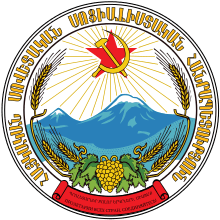 |
Supreme Soviet of the Armenian SSR
Հայկական ՍՍՀ Գերագույն Խորհուրդ |
1938 | 1995 | |
 |
Supreme Soviet of the Azerbaijan SSR
Азәрбаjҹан ССР Али Совети |
1938 | 1995 | |
.svg.png) |
Supreme Soviet of the Byelorussian SSR
Вярхоўны Савет Беларускай ССР |
1938 | 1991 | |
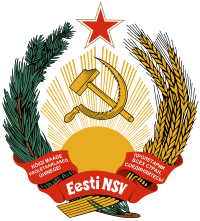 |
Supreme Soviet of the Estonian SSR
Eesti NSV Ülemnõukogu |
1940 | 1992 | |
 |
Supreme Soviet of the Georgian SSR
საქართველოს სსრ უმაღლესი საბჭო |
1938 | 1992 | |
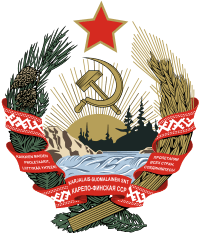 |
Supreme Soviet of the Karelo-Finnish SSR
Верховный Совет Карело-Финской ССР |
1940 | 1956 | |
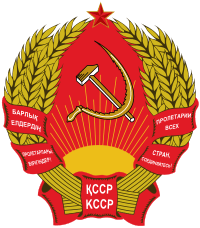 |
Supreme Soviet of the Kazakh SSR
Қазақ КСР-нiң Жоғарғы Кеңесi |
1937 | 1995 | |
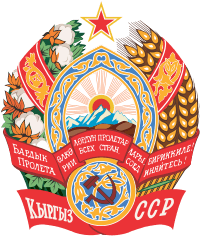 |
Supreme Soviet of the Kirghiz SSR
Кыргыз ССР Жогорку Совети |
1938 | 1993 | |
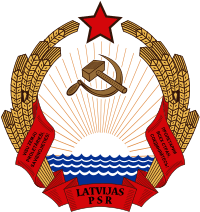 |
Supreme Soviet of the Latvian SSR
Latvijas PSR Augstākā Padome |
1940 | 1990 | |
 |
Supreme Soviet of the Lithuanian SSR
Lietuvos TSR Aukščiausioji Taryba |
1940 | 1990 | |
.svg.png) |
Supreme Soviet of the Moldavian SSR
Совиетул Супрем ал РСС Молдовеняскэ |
1941 | 1991 | |
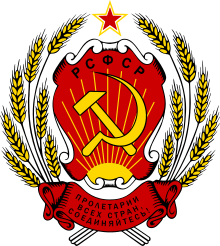 |
Supreme Soviet of the Russian SFSR
Верховный Совет РСФСР |
1938 | 1993 | |
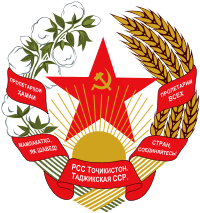 |
Supreme Soviet of the Tajik SSR
Совети Олӣ РСС Тоҷикистон |
1937 | 1994 | |
 |
Supreme Soviet of the Turkmen SSR
Түркменистан ССР Ёкары Советы |
1938 | 1992 | |
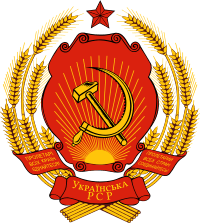 |
Supreme Soviet of the Ukrainian SSR
Верховна Рада Української РСР |
1937 | 1991 | |
 |
Supreme Soviet of the Uzbek SSR
Ўзбекистон ССР Олий Совети |
1938 | 1991 |
Supreme Soviets of the Autonomous Soviet Republics
| Soviet Republic | Supreme Soviet | Established | Disbanded | |
|---|---|---|---|---|
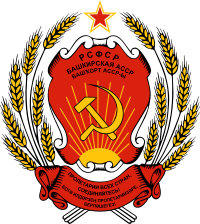 |
Supreme Soviet of the Bashkir ASSR
БАССР Юғары Советы |
1938 | 1993 | |
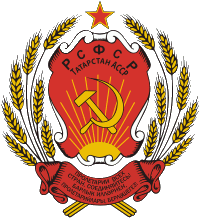 |
Supreme Soviet of the Tatar ASSR
ТАССР Югары Советы |
1938 | 1990 | |
.svg.png) |
Supreme Soviet of the Tuvan ASSR
Тыва АССР-ниң Дээди Соведи |
1961 | 1993 |
References
- Where nation-states come from: institutional change in the age of nationalism by Philip G. Roeder, p. 70
- Perestroika-era politics: the new Soviet legislature and Gorbachev's political reforms by Robert T. Huber and Donald R. Kelley, p. 52
- Russian law: the end of the Soviet system and the role of law by Ferdinand Joseph Maria Feldbrugge, p. 192
- Ideology, Politics, and Government in the Soviet Union: An Introduction– Google Knihy. Books.google.cz. January 1, 1978. Retrieved 2016-11-26.
